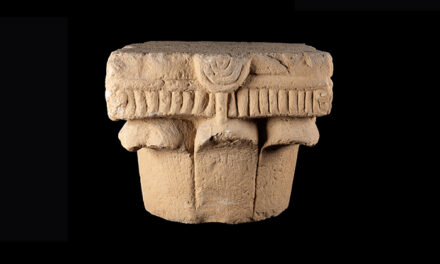A Danish rescue boat in the collection of the United States Holocaust Memorial Museum. This particular example was used in the earliest operations for the evacuation of Danish Jews organized by the Helsingor Sewing Club, known as the Kiaer Line. This boat carried 12 to 14 Jewish refugees on each trip to neutral Sweden. (USHMM) Photo courtesy of Wikimedia Commons.
By MARILYN SHAPIRO
As I continue to interview Holocaust survivors and their families, I have written the story below based on information supplied by the great-grandson of one of the Danes who helped rescue Jews in World War II.
Much has been written about Righteous Gentiles, the men and women who risked their lives to help save the Jews in Europe during the Holocaust. One of the most successful rescues happened in Denmark, where Danish authority and innumerable private citizens worked with Jewish community leaders to rescue thousands of their fellow citizens.
Limited Resistance?
Although the Nazis had occupied Denmark in 1939, initially there had been an uneasy peace. The Germans regarded the blond, blue-eyed Danes as “fellow Aryans.” With only 7,500 Jews living in the Scandinavian country, the Nazis had not required the Jews to wear yellow stars.
As the war progressed and Allied victory was in sight, however, the Danes’ initial limited resistance had progressed to massive labor strikes and sabotage. On Aug. 29, 1943, the day after the Danish government had resigned rather than help the Germans arrest and try members of the Resistance, the country was under martial law.
Roundup Of Jews
A week later, the Danish government learned through German officials who feared the political ramifications of such an action that all of Denmark’s Jews, the 6,000 citizens and 1,500 refugees, were to face the same fate as millions of others in occupied Europe: On Oct. 1, they were to be rounded up and sent to almost certain death in Nazi concentration camps. The Danes immediately began a massive operation to save their Jewish neighbors, hiding them in their homes until they could be spirited out of Denmark to Sweden in fishing boats.
For Dr. Eric Erslev, professor emeritus, Warner College of Natural Resources, Colorado State University, told me about the Danish rescue of the Jews and his great-grandparent. It had been passed down to him by his grandfather, Allan Erslev.
Jews In The House?
Although Aage Erslev was Christian, he had been married to Anita, a Jew who had died in June 1943. In late September of that year, he had welcomed several of Anita’s relatives into his home, hiding them as they awaited word that their rescue fishing boat was ready for departure.
Late one evening, he and his 18-year-old son Allan were awakened to the sound of pounding on the front door. Three Gestapo soldiers filled the doorframe. The oldest, wearing a captain’s insignia, was flanked by two others that looked barely old enough to shave.
The “Kapitän” announced that they were there to arrest Anita Erslev. When told that she had died, the soldiers demanded proof.
Aage began searching his desk for the death certificate. Meanwhile, the two younger soldiers were ordered to start searching the house.
His attempt to find the paper became even more frantic when the two soldiers, having finished their search of the first floor, stomped up the stairs to the second floor where the Jewish relatives were hiding under the bed and in the closet of one of the bedrooms. As the two stomped up the steps, Aage whipped through the papers as he heard the soldiers’ footsteps in bedroom over his head. He knew that if the Gestapo found the fugitives, they would be killed and he and his son would be jailed. At that moment, he found the death certificate. The German captain, now satisfied, yelled to his two charges to come downstairs.
Survival
As the soldiers were leaving, Aage, perhaps spurred by an overwhelming sense of relief, offered the soldiers apples from the bowl of fruit on the table. They grabbed the fruit and walked out, slamming the door.
When father and son could no longer hear the boots on the street outside their home, they went upstairs. Seconds away from being discovered, their relatives, told their rescuers how they heard the sounds of the soldiers’ breathing and saw their boots from their hiding places. They all related later that they knew that if the more experienced captain had been conducting the search, they would have been found.
The refugees did make it to the boats and found safety in Sweden.
Eric was told by his grandfather many years later, that he, Allan, was shocked that his father had given the Nazis the fruit: These were men who would have killed his mother and her relatives and who were responsible for the death of others. As the son of a Jewish mother, he and others with “impure blood” were later during the occupation targeted by the Germans. Allan went into hiding and survived.
Eric reports that his grandfather never forgot that incident and the horrors of the German occupation of his homeland.
Of the approximately 7,500 Jews living in Denmark in September 1943, only 120 Danish Jews died during the Holocaust, either in the Theresienstadt concentration camp or during their flight from Denmark. According to the United States Holocaust Memorial Museum, this relatively small number represents one of the highest Jewish survival rates for any German-occupied European country.
https://encyclopedia.ushmm.org/content/en/article/denmark
https://en.wikipedia.org/wiki/Denmark_in_World_War_II
Marilyn Shapiro, formerly of Clifton Park, is now a resident of Kissimmee, Fla. Keep Calm and Bake Challah: How I Survived the Pandemic, Politics, Pratfalls, and Other of Life’s Problems is the newest addition to her line-up of books. It joins Tikkun Olam, There Goes My Heart and Fradel’s Story, a compilation of stories by her mother that she edited. Shapiro’s blog is theregoesmyheart.me.








